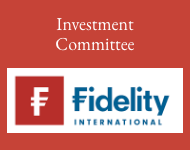Security has emerged as a long-term investment theme, says Richard Carlyle, Equity Investment Director at Capital Group.
As rising global tensions loom large, there is a sizeable reshaping of demand across defence, energy and supply chain resilience. From this, security is emerging as a long-term investment theme.
The current geopolitical conflicts are not only tragic, but they have highlighted the importance of robust defence resources. Leaders in Europe, Japan and other countries are recognising the need to invest in their own defence, driving record order books for manufacturers of ships, radar and other defence systems.
Although the United States is known for producing advanced defence systems, it faces its own challenges in modernising its naval fleet and may need to explore international partnerships to address capability gaps. Many of the world’s leading shipbuilders are based in Asia, where firms also manufacture gas turbines and other power generation equipment. Rising defence budgets represent a long-term tailwind, but only for those innovators that can adapt to a rapidly evolving landscape.
Secure access to energy and global supply chains
Secure access to energy is vital for economic stability and national security. Europe learned this the hard way following disruptions to natural gas supplies after Russia’s invasion of Ukraine. Regional differences in energy resources mean the US, Europe and Asia face distinct challenges
The US benefits from abundant domestic energy, giving manufacturers a cost advantage. Since becoming a net energy exporter in 2019, demand has surged, driven by AI data centres and reshoring of industry. To meet this, nuclear energy is gaining renewed interest. Several European countries are also expanding nuclear capacity, while increasing imports of liquefied natural gas from the US to diversify supply.
The 2020 pandemic laid bare the fault lines in our global supply chains. Today, with rising geopolitical tensions and trade frictions, governments and industries are placing greater emphasis on securing access to essential goods, including semiconductors, critical minerals, and industrial metals.
Copper is a great example of this, as its central role in data centres, grid modernisation, and broader industrial applications has made it a strategic priority. Anticipated shortages in key producing regions, such as Chile and parts of South America, are prompting nations to reassess their sourcing strategies. Western governments in particular are looking to implement policies that strengthen local manufacturing and reduce the need for external sources. Sectors likely to benefit include industrial machinery, HVAC systems, pharmaceuticals, semiconductors, and technology.
Government spending and industrial policy are driving a second wave of growth for defence and industrial companies. To sort the wheat from the chaff, investors should focus on companies that are closely aligned with enduring government priorities and with the resilience to capture sustainable growth.
Main image: edge2edge-media-t1OalCBUYRc-unsplash































